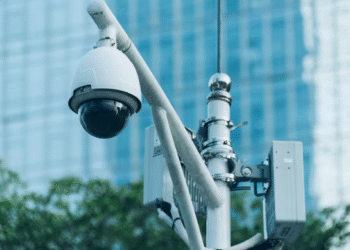Agriculture is evolving with the adoption of data-driven practices. Software solutions designed specifically for weather and soil analytics are transforming how farms are managed. These tools help farmers make faster, more accurate decisions about planting, irrigation, and fertilization. With agriculture software development services, farms now use real-time data to reduce waste, increase yield, and manage resources more effectively.
The Role of Weather Analytics in Agriculture
1. Importance of Weather Data
Weather is one of the most influential factors in crop production. Rainfall, temperature, wind, and humidity directly affect planting schedules, irrigation plans, pest control, and harvest timing. Farmers need accurate forecasts to avoid crop damage, reduce operational risks, and optimize fieldwork timing.
2. How Software Supports Weather Analytics
Agriculture software integrates weather data from satellites, sensors, and on-site stations. It processes this information using rule-based logic and predictive models. These platforms provide alerts and recommendations, such as when to water crops or protect against frost. Real-time visibility into weather conditions leads to better risk management and improved planning.
3. Use of IoT Devices and Sensors
IoT devices are used to measure temperature, humidity, and rainfall in real time. These sensors send data to cloud-based systems. Agriculture software development includes modules that clean, analyze, and display this data for farmers. This real-time feedback allows farmers to act immediately when adverse weather is detected.
Soil Analytics: Monitoring and Managing Soil Health
1. Importance of Soil Condition
Soil is the foundation of agriculture. Its pH, nutrient content, moisture level, and microbial activity determine how well crops grow. Knowing the condition of the soil at different depths helps farmers apply fertilizers and irrigation efficiently. Poor soil health leads to lower yields and increased costs.
2. Digital Tools for Soil Monitoring
Modern agriculture software includes digital soil maps, moisture tracking, and nutrient monitoring tools. Data is collected using in-field sensors and lab test results. Developers design software that turns raw soil data into easy-to-understand insights. These platforms often allow farmers to compare zones, track changes, and set thresholds for alerts.
3. Automation and Decision Support
Soil analytics tools help automate irrigation based on real-time moisture data. If soil in a section is dry, the system recommends targeted watering. This prevents overwatering and reduces water use. Similarly, nutrient data supports the precision application of fertilizers, which improves soil health over time.
Predictive Analytics for Smart Farming
1. Use of Historical and Real-Time Data
Predictive analytics in agriculture uses past records, current sensor data, and external data such as weather forecasts. These inputs are processed by algorithms to estimate future events like rainfall, drought, or pest outbreaks. Farmers use these predictions to plan crop cycles, reduce damage, and improve productivity.
2. Machine Learning in Agriculture Software Development
Machine learning models in agriculture software can learn from past performance to predict outcomes. These models are trained on years of data and can estimate yields, identify problem areas, and suggest improvements. For example, they can analyze patterns in soil pH and correlate them with crop health over time.
3. Real Use Cases
- A crop monitoring tool predicts nutrient deficiencies based on leaf color, soil nitrogen levels, and rainfall.
- An irrigation planner calculates water requirements for each field section using historical rainfall and sensor data.
- A disease alert system predicts fungal outbreaks based on humidity and temperature forecasts.
Benefits of Agriculture Software Development Services
1. Faster and Better Decisions
Software allows farmers to make decisions quickly using current and accurate data. Instead of relying on manual checks, they get automated insights about weather risks or soil changes. This leads to timely actions that protect crops and increase yields.
2. Reduced Resource Waste
Precise application of water, fertilizers, and pesticides helps reduce waste. With software-based analytics, resources are applied only when and where needed. This improves sustainability, cuts costs, and reduces the impact on the environment.
3. Continuous Monitoring
Real-time dashboards and alerts ensure constant monitoring of field conditions. Farmers can check data from their phones or laptops without visiting the field. This saves time and allows for remote decision-making.
4. Long-Term Improvements
Agriculture software stores data over time, allowing farmers to identify trends and improve year-over-year. For example, they can compare soil health before and after adopting new farming practices.
Key Components of Agriculture Software for Weather and Soil Analytics
1. Data Collection Modules
- Connect to weather APIs, satellites, and in-field sensors
- Collect data on temperature, rainfall, humidity, and wind
- Capture soil pH, nutrients, and moisture levels
2. Data Processing and Storage
- Use cloud platforms for real-time and historical data storage
- Implement algorithms for filtering and cleaning raw data
- Structure data into usable formats like dashboards and reports
3. Analytics and Reporting Tools
- Predict trends and patterns using AI models
- Visualize metrics like rainfall per acre or nitrogen deficiency by zone
- Generate alerts for action when thresholds are breached
4. User Interface Design
- Display insights in charts, maps, and tables
- Make the UI mobile-friendly and usable without internet connectivity
- Allow for multi-language support for broader farmer accessibility
Technical Challenges in Agriculture Software Development
1. Data Quality and Inconsistency
Sensors may deliver noisy or incomplete data. Software must include validation steps to correct or remove faulty inputs. Building accurate algorithms depends on clean, reliable data streams.
2. Limited Connectivity in Rural Areas
Farms may lack stable internet access. Developers must support offline data collection and syncing when connections return. Edge computing and local data storage can help bridge this gap.
3. Integration with Existing Systems
Farmers use various machines, tools, and legacy systems. Agriculture software must connect with these tools using standard protocols and APIs. Interoperability is key to a smooth transition.
4. Cost and Accessibility
High-end solutions may be too expensive for small farms. Developers should create modular, scalable systems that offer core features at lower cost and advanced tools for larger operations.
Future Trends in Agriculture Software Development
1. Use of Satellite and Drone Data
High-resolution satellite and drone images can enhance weather and soil analysis. Developers are working on tools to interpret this imagery into actionable insights like crop stress or soil erosion.
2. Blockchain for Data Security
Farm data security is becoming a concern. Blockchain helps ensure data integrity and traceability. It can also verify input quality and certify produce origin for consumers.
3. AI Chat Interfaces for Farmers
Simple voice and text-based chat interfaces in regional languages can guide farmers. These AI-powered tools respond to queries like “When should I irrigate?” or “What is my soil pH level?”
Conclusion
Agriculture software development services are playing a major role in changing how farming works. By using weather and soil analytics, these solutions help farmers improve productivity, reduce waste, and respond to challenges with accurate, real-time data.
As technologies like AI, IoT, and machine learning continue to evolve, agriculture software will offer even more precise tools. These will support sustainable farming practices and help meet the growing global demand for food.






